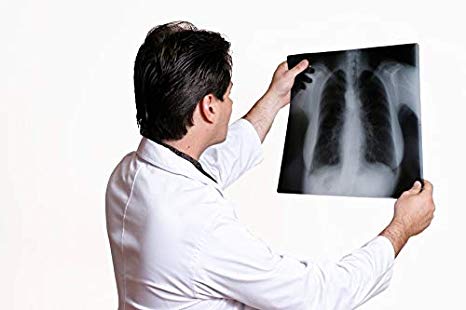Types and Usage
X-ray Film composition
X-ray films for general radiography consist of an emulsion-gelatine containing radiation sensitive silver halide crystals, such as silver bromide or silver chloride, and a flexible, transparent, blue-tinted base. The emulsion is different from those used in other types of photography films to account for the distinct characteristics of gamma rays and x-rays, but X-ray films are sensitive to light. Usually, the emulsion is coated on both sides of the base in layers about 0.0005 inch thick. Putting emulsion on both sides of the base doubles the amount of radiation-sensitive silver halide, and thus increases the film speed. The emulsion layers are thin enough so developing, fixing, and drying can be accomplished in a reasonable time. A few of the films used for radiography only have emulsion on one side which produces the greatest detail in the image.
Film Selection
The selection of a film when radiographing any particular component depends on a number of different factors. Listed below are some of the factors that must be considered when selecting a film and developing a radiographic technique.
Composition, shape, and size of the part being examined and, in some cases, its weight and location.
Type of radiation used, whether x-rays from an x-ray generator or gamma rays from a radioactive source.
Kilo Voltages available with the x-ray equipment or the intensity of the gamma radiation.
Relative importance of high radiographic detail or quick and economical results.
There are mainly four types of films:
1. Standard Film
Standard X-ray cassettes with intensifying screens have limited use, as they are too big for most uses except extra-oral views.
Standard dental films in sizes 2 and 4
Standard dental films in sizes 2 and 4
2. Non-Screen Film
These films are useful for both extra-oral and intra-oral views although their intra-oral use is limited depending on the size of film and the size of the mouth. They provide very good radiographic detail.
3. Dental Film
Dental film is available in six speeds, labelled A, B, C, D, E and F. Only D, E and F are used in practice with E (or “Ektaspeed” ) being the preferred speed, in order to reduce radiation exposure to operatives and patient. F speed film (Kodak “Insight”) became available in 2000 but is not in common use in veterinary dental practice as yet.
There are also six sizes of film available, with size 4 (57mm x 76mm) and size 2 (31mm x 41mm) being most useful for veterinary work.
4. Self-Developing Film
Available as ECO 30™ and the Hanshin™ system in periapical (size 2) format only. Size 2 is too small for most dog teeth and, therefore, their use is limited to smaller dogs and cats. The ECO 30 films come ready packed with a monobath containing both developer and fixer, and so do not require a darkroom. The film develops and fixes in 50 seconds. The Hanshin system uses an injector system to run the chemicals into the film envelope. Both systems are expensive, costing more than £1 for each film.
Tags: Be Prayerful Connect With Your Soul










